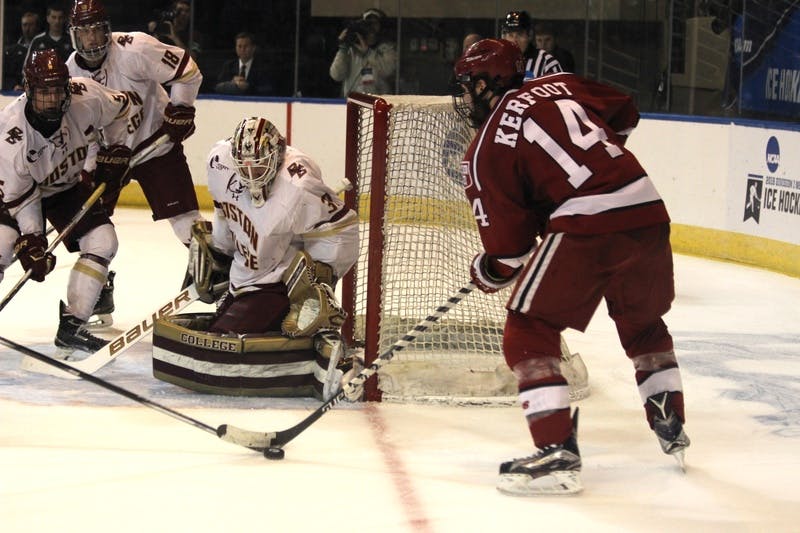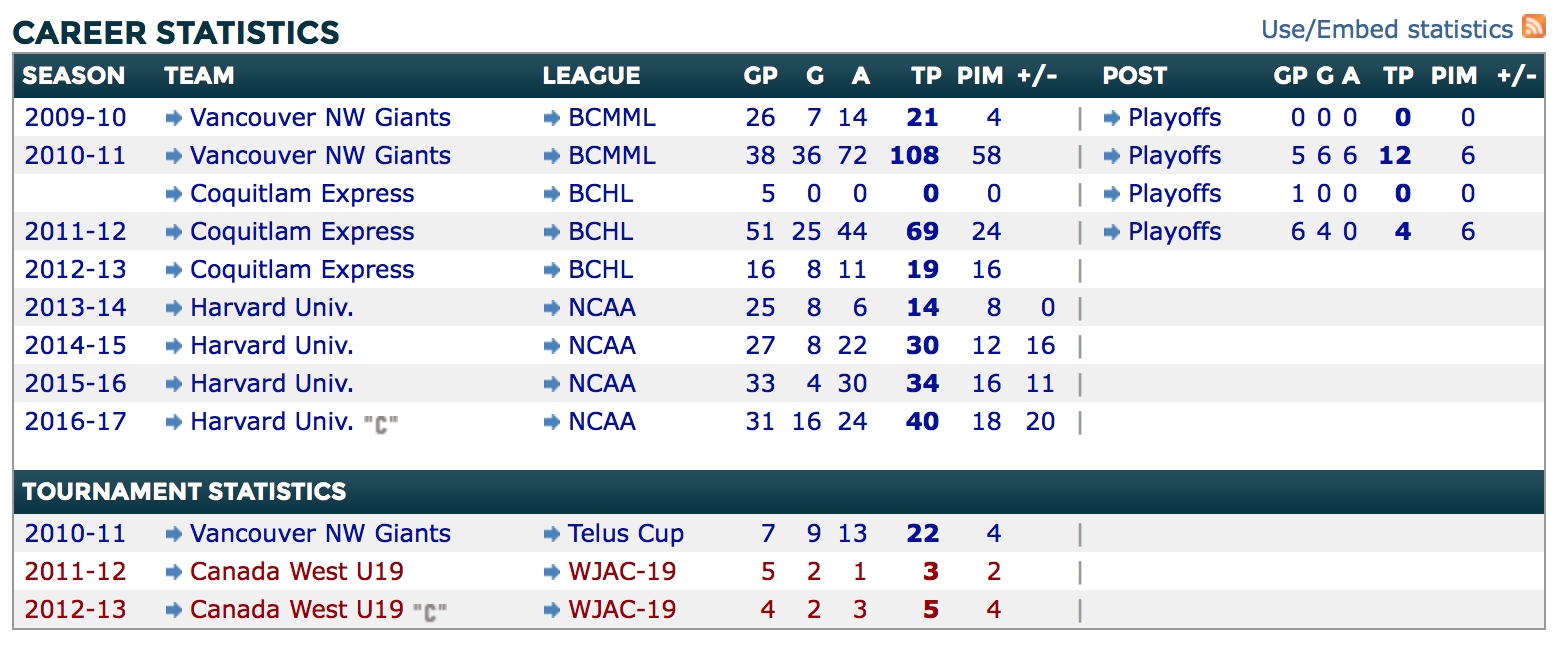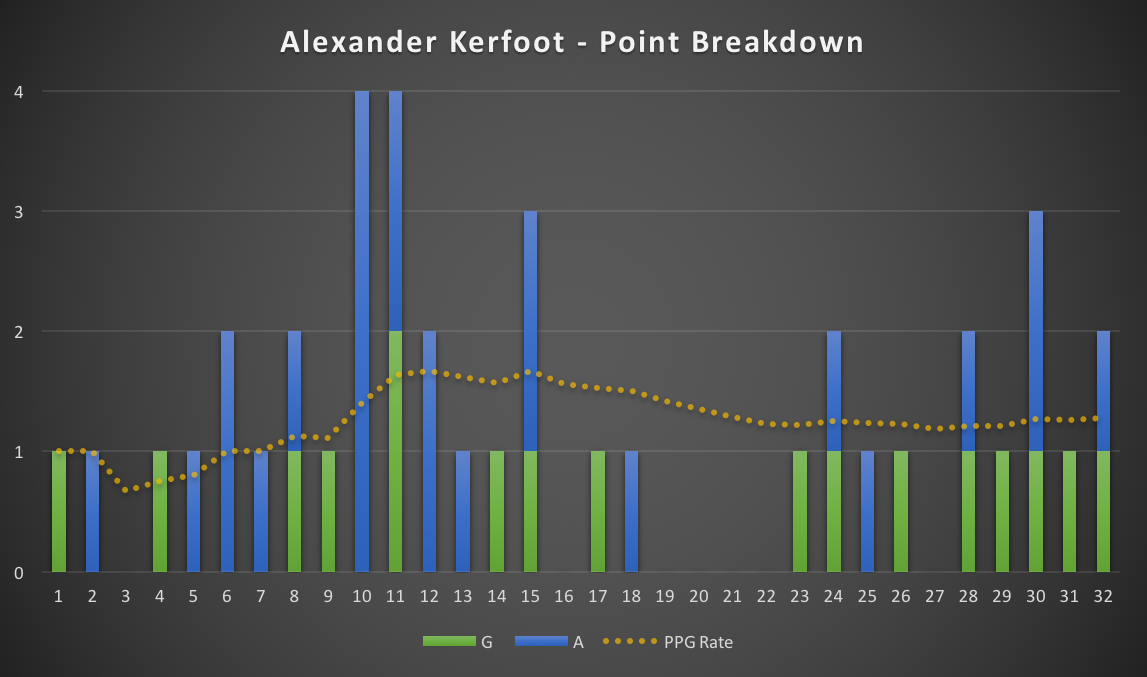On the Connection Between Alex Kerfoot and the Vancouver Canucks

7 years ago
News is flying fast and furious these last few weeks. Whether it’s about the Canucks’ own NCAA products in Adam Gaudette and Brock Boeser, free agents from that same pool or other odds and ends, the Canucks keep finding ways to stay busy. It’s a lot to keep up with!
With that, I put off profiling a prospect rumoured to be exercising the ‘Vesey’ rule, as this situation won’t resolve itself any sooner than August. Now, with the benefit of a little forward thinking and a moment to breathe, I want to provide as much insight into the situation connecting Harvard forward Alex Kerfoot and the Vancouver Canucks.
And here we are.
I’ve gone to the liberty of covering the CBA article that Kerfoot is rumoured to be considering exercising this summer. The NHL outlines the ‘Vesey Rule’ (once called the ‘Schultz Rule’) in Article 8.6c (iv) of the NHL/NHLPA.

To summarize, a NCAA player who has completed their senior season can opt not to sign an entry-level contract with the team that drafted them, and by doing so, they become an unrestricted free agent on August 15th following the conclusion of their collegiate career.
Kerfoot was selected 150th overall in the 5th round of the 2012 NHL Entry Draft by the New Jersey Devils. His father, Greg Kerfoot, is a part-owner of the Vancouver Whitecaps.
When the Devils selected Kerfoot, he’d exploded offensively for the Coquitlam Express of the BCHL and had aspirations of taking his game to the next level in the NCAA with Harvard, which he did. Kerfoot played his draft-plus one season in the BCHL, before leaving for the NCAA ranks the following season.
The reason for the 5’10” and 175lbs winger returning to the BCHL for another year was due to his late birthday, which is August 11. So despite being drafted almost five years ago, he will be 23 years old when the season starts next year.

Like many rookies, Kerfoot saw limited time in his first season of NCAA action, which limited his point production to 14 points in 25 games. He slowly earned more responsibility over the course of the four years, on an upward trajectory to the team’s captaincy, which he holds to this day.
Harvard won the NCAA ECAC Championship during the 2014-15 season. He is also one of the ten finalists for the Hobey Baker Memorial Trophy.

The West Vancouver native is tied for 21st in NCAA scoring. What stands out for him, is his low shooting rate. His 2.81 SH/GP puts him in the 100’s of skaters. Couple with a reasonable shooting percentage (18.4%) for the NCAA, you would like him to shoot more. If he could’ve increased that rate, then production would’ve likely followed. That said, Hockey Prospectus had a scouting report on Kerfoot in late 2015 that mentioned his shooting strength as a weakness
Alexander Kerfoot’s speed got him noticed and keeps him on the radar. His puck skills and hands are good enough to add to the picture, but his other deficiencies – particularly his lean frame – make his future tenuous. At best, he could be a bottom line player who scores 7-10 goals a year from turnovers which lead to odd-man rushes. At worst, the Devils do not offer him a pro contract after his Crimson career ends.
SBN College Hockey News had Alexander Kerfoot listed as the 98th best NHL prospect in the NCAA, and had the following scouting report on him:
A 2012 NHL Draft selection of the New Jersey Devils, he is undersized, but he has above average speed and exceptional vision. He does a good job of creating time and space for his linemates by using his quickness to separate from defenders.
I reached out to Shane Malloy, co-host of Hockey Prospect Radio on NHL Network, for another scouting report:
An intelligent puck possession playmaking center who can play on the wing that has good passing ability whether stationary or at speed. Uses the give and go well and can draw defenders to create time and space for his line-mates. Is a quick darting skater with the agility to dodge and roll off defenders. He defensive game has matured once his defensive habits such as an active stick, head on a swivel, taking correct angles became consistent. He lacks size and strength to compete and win one on one battles for pucks and body position so he must use his hockey sense and skating to compensate. He is beginning to shoot with greater frequency which makes him less predictable with the puck in the offensive zone.
Based on those three reports, it’s clear that Kerfoot has the potential to be a good offensive player in the AHL, with perhaps the chance to play some games in the NHL.
Lastly, when we use pGPS to take a look at the Harvard winger, 8.7% (n=103) went on to become NHL regulars. That number is on the lower side of NCAA prospects, but as we saw earlier this month when I looked at some of the UFA free agents, it isn’t that far off the trend for this year.
From a purely thought process point of view, waiting on Kerfoot to become a UFA and then chasing after him would likely be the best course of action. At this moment, he wouldn’t be a prospect that I would target in a trade given that he could be available for free in a few short months. There is no guarantee that you can convince him to sign with you even if you do acquire him, so don’t give up a draft pick to obtain his rights.
However, if Kerfoot does make it to unrestricted free agency in August, the Canucks would be wise to try and sign him. He would provide more depth for Comets next season, and given how the roster is shaping up in Utica, there would be an opportunity for him to establish himself quickly.
We obviously aren’t privy to all the behind the scenes information, but having his father own a professional sports franchise here and having grown up here, are likely things working in favour of the Canucks.
There is no guarantee that Kerfoot will work out, but he would provide something that the Canucks’ prospect pool is lacking. His speed and playmaking abilities should give him a decent shot of carving out a career as a bottom six forward.





